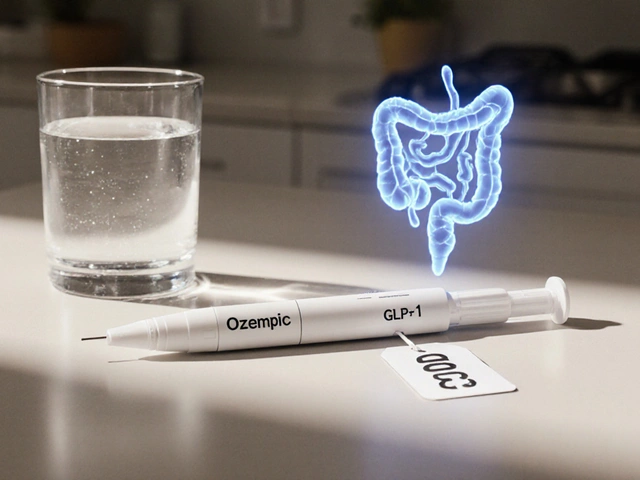Imagine a world where one tiny pill could transform the lives of millions battling diabetes. For most folks with type 2 diabetes, this isn’t just wishful thinking—it’s reality. The number one diabetic pill has a reputation that’s stood strong for decades, breaking barriers and becoming the go-to weapon in diabetes management. Maybe you’ve heard its name at a checkup or seen it on a prescription bottle. But why does this medication outshine the competition? The story behind the most recommended diabetic pill is filled with fascinating science, everyday benefits, and a few surprises that nobody warns you about.
What Makes a Pill the "Number One" for Diabetes?
Any diabetic medication can claim to lower blood sugar, but not every pill wins the trust of doctors across the globe. So, what sets the top contender apart from the rest? Simplicity comes first: the pill needs to work for the largest group—people with type 2 diabetes, not just rare forms. It also has to be affordable, safe for most patients, and reliable over the long haul. You’d be surprised how many drugs have hit the market with a bang, promising miracles, only to fall out of favor thanks to safety concerns or side effects. In comparison, the number one pill is usually the first choice when someone is diagnosed and, in most cases, remains a part of their treatment journey for years.
Doctors call this pill a cornerstone because it works with different combinations, slides seamlessly into treatment plans, and helps patients avoid complications. It stands out because it isn’t just about blood sugar—studies show it may lower risks of heart disease and even benefit kidneys. But let’s keep it real: nothing cures diabetes with one dose. Success with this medication comes from pairing it with healthy habits and understanding how to use it right.
Why Metformin Leads the Pack
When it comes to the world’s favorite diabetes pill, metformin takes the crown. Long before fancy new drugs came onto the scene, metformin was getting the job done. Doctors trust it for good reason. First, it actually roots back to a traditional herbal remedy made from a plant called French lilac. Fast forward to the modern era, and metformin, or the chemical name dimethylbiguanide, has become a staple in diabetes clinics everywhere—more than 120 million people take it!
What’s so special about it? For starters, metformin slashes blood sugar levels without causing weight gain. In fact, it sometimes helps people shed extra pounds, a win-win for most. It tackles high blood sugar by making your liver chill out on glucose production and telling your muscles to suck up more sugar from the bloodstream. All of this, and it rarely sends folks into dangerous low blood sugar episodes, a terrifying side effect of some other medications. Another big perk: it’s cheap. You can buy a month’s supply for less than what some folks spend at Starbucks in a week.
Researchers around the world have put metformin under the microscope, and results consistently back it up. Beyond just controlling sugar, there’s growing evidence it lowers the risk of heart attacks and strokes in people with diabetes. This is a huge deal because heart complications are a top concern in diabetes. There’s even research suggesting possible protection against certain cancers. That’s not hype: a 2019 review published in the journal "Diabetes Care" found solid links between metformin and reduced risk for bladder, breast, and colon cancer, although experts are still studying the details.
And here’s a striking number: in the landmark UKPDS (United Kingdom Prospective Diabetes Study), patients on metformin not only had better blood sugar, but also lived longer than folks on diet alone. These facts make metformin the obvious first line for new type 2 diabetes cases unless someone can’t tolerate it for medical reasons.

How Metformin Works: The Science, Made Simple
Imagine your liver is like a sugar factory that never shuts down. For people without diabetes, this isn’t much of a problem. But in type 2 diabetes, the body’s controls break, and suddenly the liver keeps pushing out more sugar than your body needs. That’s where metformin comes in. It tells the liver: “Hey, take it easy with the glucose, we’ve got enough!”
But it doesn’t stop there. Metformin also works like a booster for your muscles, helping them use sugar more efficiently so it ends up fueling your body instead of floating uselessly around in your blood. And because it doesn’t force your pancreas to squirt out extra insulin, the risk of blood sugar plummeting is low compared to insulin shots or some sulfonylurea pills.
Let’s talk numbers. Metformin can reduce an HbA1c level (an average blood sugar test) by about 1.5%, which is plenty to get many patients into a safer range. Combine it with exercise, and you can hit even higher success rates. There are even slow-release forms now that make it easier on the stomach, which has always been metformin’s weak spot for some users.
Check out this visual to see how metformin compares to other popular medications.
| Medication | Effect on HbA1c (%) | Weight Change | Risk of Low Blood Sugar | Typical Cost (per month, USD) |
|---|---|---|---|---|
| Metformin | 1.0 - 1.5 | Neutral/Loss | Low | $4 - $15 |
| Sulfonylureas | 1.0 - 1.5 | Gain | Moderate-High | $10 - $40 |
| DPP-4 Inhibitors | 0.5 - 0.8 | Neutral | Low | $350+ |
| SGLT2 Inhibitors | 0.7 - 1.0 | Loss | Low | $450+ |
Pretty eye opening, right?
Real Talk: Side Effects, Myths, and Daily Tips
For all its perks, metformin isn’t perfect. Ever heard someone say it "wrecks your stomach?" Maybe a friend told you they quit because of bellyaches or bathroom dashes. Stomach trouble—like nausea or loose stools—is the main reason people stop taking it, but that usually happens when starting too fast or taking it without food.
If you want to dodge side effects, ask your doctor about starting with a low dose and building up slowly. The extended-release forms also help cut down on those urgent bathroom runs. Food plays a role, too—taking metformin with a meal works wonders.
Now, there’s an old myth about metformin causing kidney damage. That’s not quite right. Doctors do avoid it in people with advanced kidney disease, but if your kidneys are healthy, it’s perfectly safe. There’s also a super rare risk of lactic acidosis—a very serious, almost unheard-of complication, but it’s not a worry for most folks with normal kidneys and liver. If you ever need a hospital procedure needing dye, your doc might pause your metformin to be safe.
B12 deficiency is another thing to watch, especially if you’ve taken metformin for several years. Some studies show that up to 20% of long-term users may have lower B12, which can cause nerve issues. Ask your doctor to check your B12 once a year.
- Start low and go slow with the dose
- Always take with food to avoid stomach issues
- Check your B12 levels if you’ve been on metformin for a while
- Talk to your doctor if you develop severe or persistent side effects
Keep these tips in mind and most people do just fine. The real magic with metformin happens when you combine it with exercise, weight loss, and smart food choices. That’s the winning combo for tackling type 2 diabetes and feeling your best.

What’s Next? New Pills and Combination Therapies
Diabetes medicine is always changing. In the last decade, flashy new pills and even injections have hit the market, many offering bonus effects like weight loss or heart protection. Some of these new meds, like SGLT2 inhibitors (think Jardiance or Farxiga) and GLP-1 agonists (Ozempic gets the headlines), are total game changers for people who need more than just sugar control. But the truth is, metformin still starts the story for almost everyone with type 2—and nothing has unseated it as the first recommended pill so far.
Doctors often add other medications to metformin if blood sugar stays too high or someone has specific health risks. That means you might find yourself taking two or even three pills, or combining a pill with a weekly injection. Why? Because diabetes isn’t one-size-fits-all. Age, other health conditions, family history, weight changes, and insurance all play a role in the best choice.
Here’s a look at what the future holds:
- Better combination pills, so you can take fewer tablets daily
- Smart glucose sensors and apps that help track how medications are working
- Personalized medicine—eventually, your DNA may help pick just the right drug for your body
- Affordable generic versions of new drugs, widening access for everyone
If you’re just starting your diabetes journey or have been dealing with it for years, don’t get caught up in buzzwords or panic about the latest hot pharma product. For most, metformin is still the best first step. No, it’s not a miracle cure, but it’s the most trusted pill to start regaining control of blood sugar, heart health, and day-to-day confidence. It just works. And when you’re managing a condition like diabetes, that little bit of reliability goes a long way.

 What Is the Number 1 Unhealthy Food in the World?
What Is the Number 1 Unhealthy Food in the World?
 Understanding the Most Aggressive Cancer Types
Understanding the Most Aggressive Cancer Types
 Most Challenging Cardiothoracic Surgeries: Insights Into Heart Surgery Complexity
Most Challenging Cardiothoracic Surgeries: Insights Into Heart Surgery Complexity
 Best Over-the-Counter Alternatives to Ozempic for Weight Loss
Best Over-the-Counter Alternatives to Ozempic for Weight Loss
 Understanding Trazodone: Is It a Narcotic?
Understanding Trazodone: Is It a Narcotic?